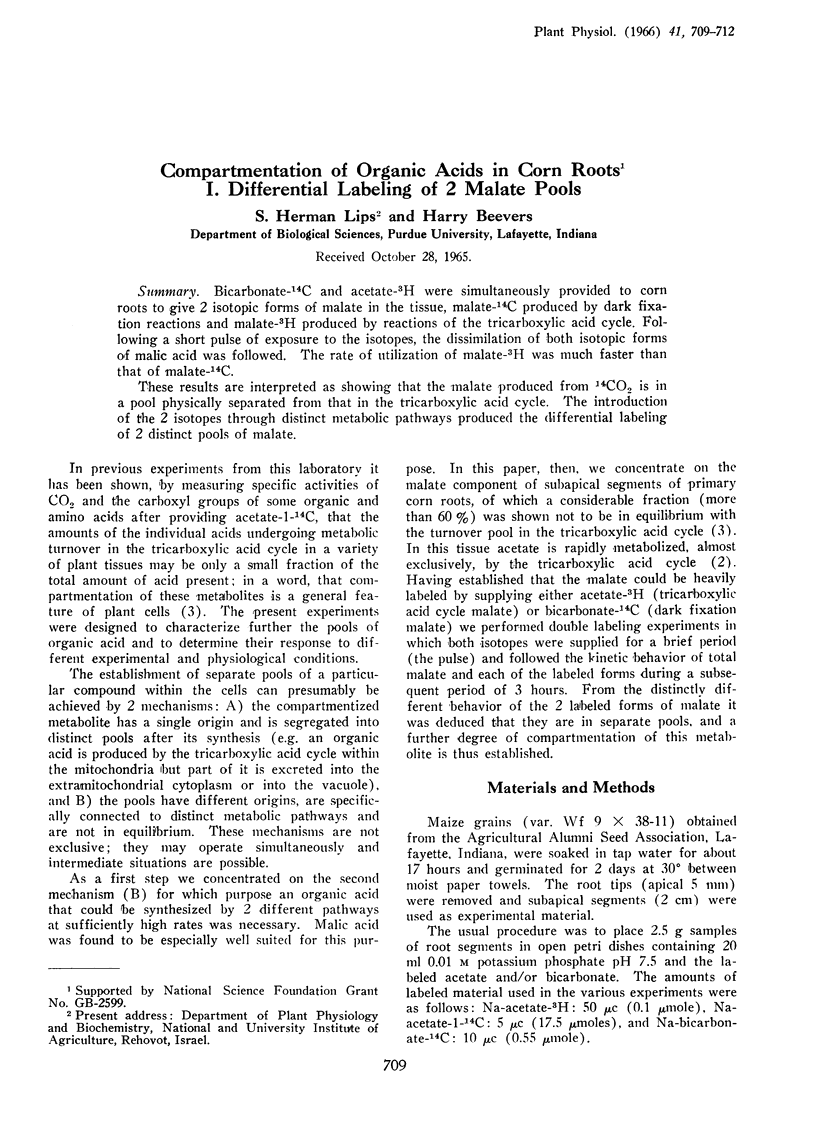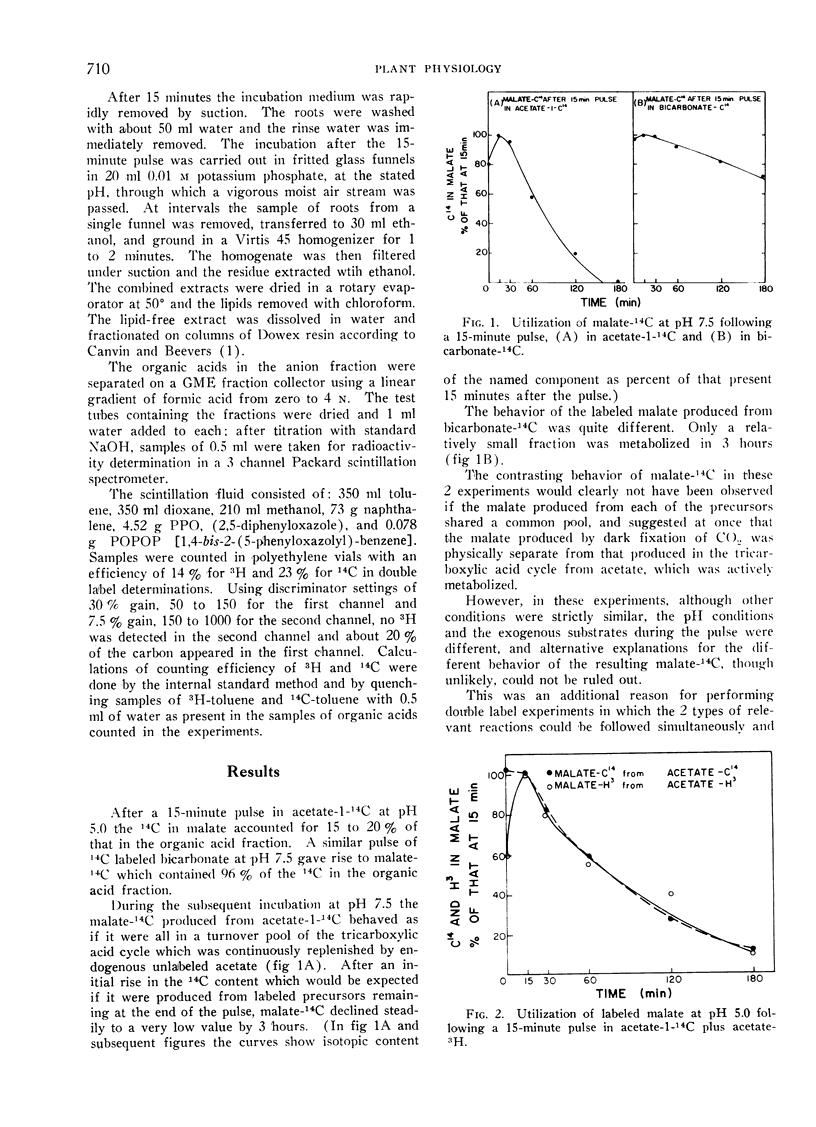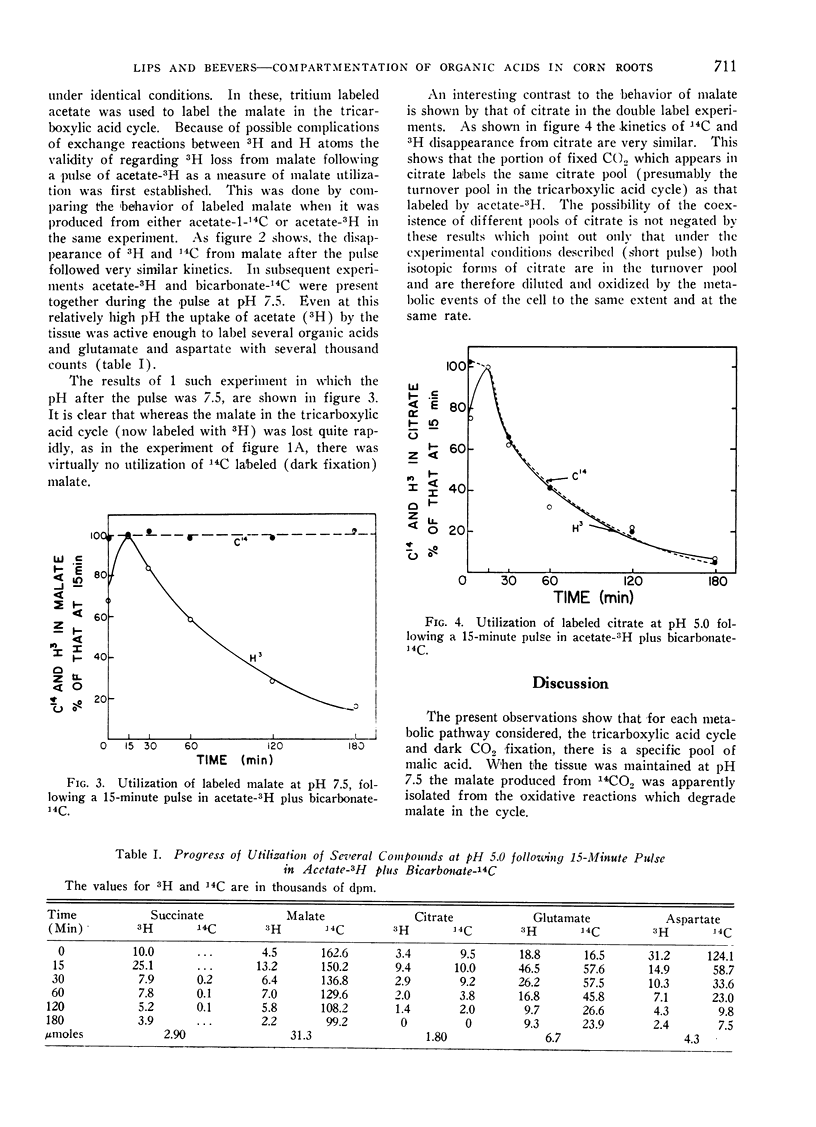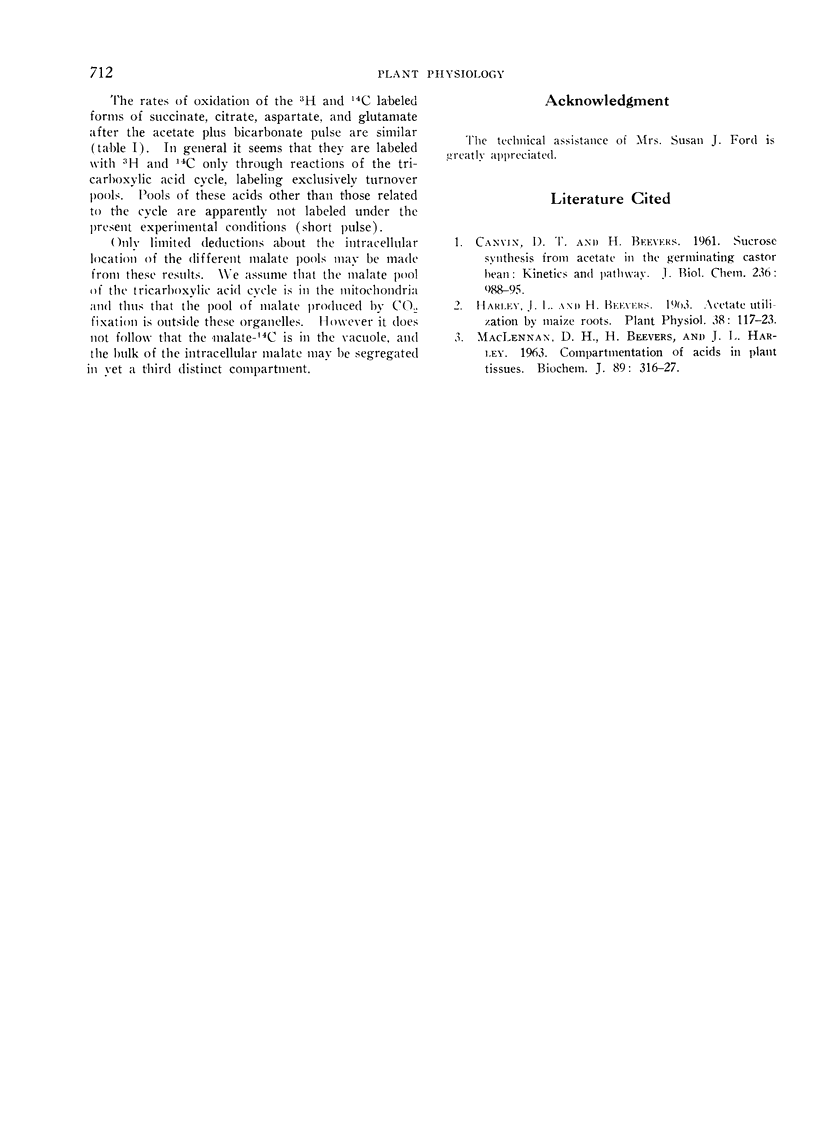Abstract
Bicarbonate-14C and acetate-3H were simultaneously provided to corn roots to give 2 isotopic forms of malate in the tissue, malate-14C produced by dark fixation reactions and malate-3H produced by reactions of the tricarboxylic acid cycle. Following a short pulse of exposure to the isotopes, the dissimilation of both isotopic forms of malic acid was followed. The rate of utilization of malate-3H was much faster than that of malate-14C.
These results are interpreted as showing that the malate produced from 14CO2 is in a pool physically separated from that in the tricarboxylic acid cycle. The introduction of the 2 isotopes through distinct metabolic pathways produced the differential labeling of 2 distinct pools of malate.
Full text
PDF



Selected References
These references are in PubMed. This may not be the complete list of references from this article.
- CANVIN D. T., BEEVERS H. Sucrose synthesis from acetate in the germinating castor bean: kinetics and pathway. J Biol Chem. 1961 Apr;236:988–995. [PubMed] [Google Scholar]


